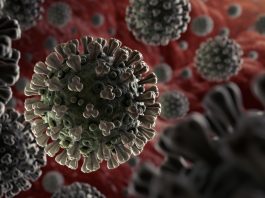The European nuclear research organisation, CERN, has established a COVID-19 task force to help reduce the impact of the pandemic – could this task force help to battle the infectious disease?
Launched by CERN’s Director-General, the COVID-19 task force has already received hundreds of messages suggesting ideas ranging from producing sanitiser gel to designing and building sophisticated medical equipment. An example of the deployment of CERN’s technology, is the design of a novel ventilator which is to be tested by healthcare experts this month.
Using particle physicists to create a novel ventilator
CERN’s COVID-19 task force have produced a novel streamlined ventilator, named HEV. The research is led by a team of physicists and engineers from the LHCb collaboration at CERN and supported by several CERN services.
The research team realised that the types of systems used to regulate gas flows for particle physics detectors could be used to design a novel ventilator. The HEV design could be used for patients in mild or recovery phases, enabling the more high-capacity machines to be used for the more intensive cases.
The first prototype was created by CERN on 27 March 2020. Inexpensive and readily available, the physical characteristics of the pressure regulators, valves and pressure sensors are now being refined, and the support of clinicians and international organisations is being harnessed for further testing within a hospital setting.
Further applications for CERN’s COVID-19 task force
CERN have already launched a range of initiatives under their COVID-19 task force. The first being the production of one tonne of sanitiser gel to distribute to local emergency response teams. Secondly, the CERN Fire and Rescue Service has been working with the emergency services since late March.
CERN have also utilised their 3D printing and workshop capabilities, which have been deployed to complement the production of protective equipment such as masks and Perspex barriers for law enforcement in the region. The task force is also committed to deploying the particle physics community’s considerable computing capacity in order to assist in the search for a vaccine.
“We have been very encouraged by the enthusiasm of the community to contribute… ideas range from the deployment of CERN’s powerful computing, engineering and technical resources, to assisting the local effort through logistical and emergency response support,” said task-force chair Beniamino Di Girolamo.
CERN aims to ensure effective and well-coordinated action, drawing on their advanced technologies and working closely with experts in healthcare, drug development, epidemiology and emergency response.









